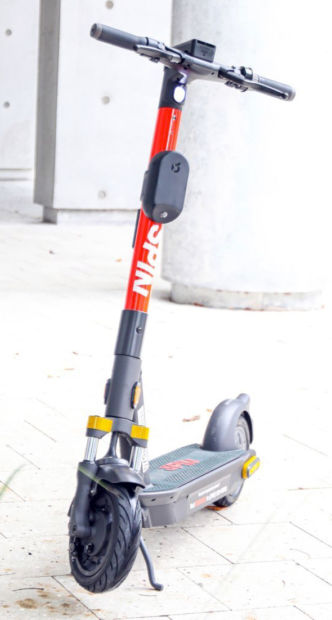Drover AI raises $5.4m to push machine learning
- August 15, 2022
- Steve Rogerson

Californian micromobility start-up Drover AI has raised $5.4m in a series A round to scale its onboard computer vision (CV) and machine learning (ML) technology.
This should help enhance safety and regulatory compliance while offering opportunities to explore added value from insights created by its data.
The technology has been deployed on more than 5000 shared scooters across three continents by operators such as Spin, Voi, Beam, Dott and Helbiz.
Drover AI will use the funds to scale the delivery on existing orders, and accelerate the integration of its PathPilot Lite technology with vehicle and IoT manufacturers for micromobility vehicles.
The company has pioneered the use of onboard CV and ML in the micromobility sector with its first product, the PathPilot. The initial application has enabled enhanced safety and regulatory compliance due to PathPilot’s ability to detect sidewalks, streets and bike lanes while moving and validate proper parking compliance at the end of rides. Edge-based CV and ML provides real-time contextual location awareness and presents opportunities to explore added value for cities and operators from insights created by the collected vision-based data.
“The response to our technology and the subsequent demand we have seen from the market far surpasses any of our own early assumptions,” said Alex Nesic, co-founder of Drover. “Not only do we have continued interest from shared scooter operators across Europe and Asia, we are also involved with manufacturers of all types of micromobility form factors, with interest to incorporate our proprietary CV and ML technology to meet growing rider and pedestrian safety initiatives.”
The funding round was led by Vektor Partners with follow-on participation from seed investors including Avesta Fund, Masik Enterprises and Kurt Jaggers. They join existing investor 500 Global to support the scale up.
“We are very fortunate to have secured the support of Vektor Partners on our mission to leverage computer vision and artificial intelligence for the benefit and long-term success of micromobility,” said Christian Scheder-Bieschin, co-founder and CEO of Drover AI. “The team at Vektor contributes genuine strategic knowledge of the mobility space as well as an understanding of the huge potential value that exists in harvesting vision-based data from fleets of micromobility vehicles.”
Chris Riley, partner at Vektor Partners, added: “Micromobility is a big market, and it will continue to grow rapidly throughout this decade. Drover’s technology solves various pain points for cities, micromobility operators and riders simultaneously, helping make urban transportation safer and cleaner while at the same time unlocking significant economic value by reducing cost and enabling new business models. Working closely together with cities has hereby become a crucial element in establishing sustainable micromobility service offerings. We are very excited to be able to support the Drover team on this journey.”
Since its founding in early 2020, Drover AI has established itself with more than 5000 PathPilot units in operation on shared scooters across the USA, EU and Asia. Drover partners have used PathPilot technology to differentiate their capabilities from more traditional positioning and tracking, while cities have welcomed the enhanced safety and regulatory compliance. As awareness of this technology grows with various stakeholders, Drover is capitalising on the opportunity to integrate its technology more deeply with vehicle and IoT module manufacturers for future iterations of micromobility.
Scheder-Bieschin added: “With real fleet deployment of our PathPilot technology, we are also beginning to assess the opportunities for the significant amount of unique urban data that we capture and harvest, including how to best work with cities and other stakeholders to facilitate smart city initiatives. Never before has there been such a scalable and sustainable way to measure and more effectively leverage this form of urban transportation for the better good.”




